Our Blog - Summer 2024 Trip - Canterbury, England
This was our first time visiting Canterbury ... made famous in Chaucer's Canterbury Tales, and for the Canterbury Cathedral and Archbishop of Canterbury. More about all of this a bit later. But first, a VERY short history ...
Canterbury has a long history and has been occupied since Paleolithic times. The Romans were here for centuries and we will see a few remnants of that in the blog (and some I will mention because we didn't see it). Then Saint Augustine and Christianity arrived in 597. Augustine was the first Archbishop of Canterbury, and in 672, the Archbishop of Canterbury was given authority over the entire English church.
In 1011, a large Viking army besieged and pillaged the town. Remembering this destruction, the inhabitants did not resist William the Conqueror's invasion a bit later, in 1066. William immediately ordered a wooden motte-and-bailey castle to be built next to the Roman city wall. In the early 12th century, the castle was rebuilt with stone.
Thomas Becket, who will later be martyred here, was born around 1120 in London. He had been working for Theobald of Bec, who was the Archbishop of Canterbury, when Theobald died in 1162. He was then nominated to be the next Archbishop of Canterbury although at the time of his confirmation as Archbishop, he wasn't even a priest yet! He was ordained a priest the day before he was consecrated as Archbishop. Although Becket had befriended King Henry II earlier, his actions in this new role as Archbishop caused a conflict with the King, which led to his murder in 1170 (more on that inside the Cathedral). But the Pope made Becket a saint and his shrine at the Cathedral became a pilgrimage site. Pilgrimages to his shrine were the inspiration for Chaucer's immortal Canterbury Tales book, which is made up of 24 stories that tells the take of a group of pilgrims traveling from London to Canterbury to visit the shrine..
By 1348, when the Black Plague hit Canterbury, it had the 10th largest population in England (around 10,000), but by the early 16th century, the population had fallen to around 3,000. In the mid-16th century, the first of many settlers who were fleeing persecution (like the Huguenots) arrived only to flee England several years later with the accession of Mary I.
I mentioned in the short history that William the Conqueror built a castle that was rebuilt in stone in the 12th century. What is behind the scaffolding is that stone castle from 1100-1135. You can see a picture of what it looks like without the scaffolding on the Wikipedia page of the castle.
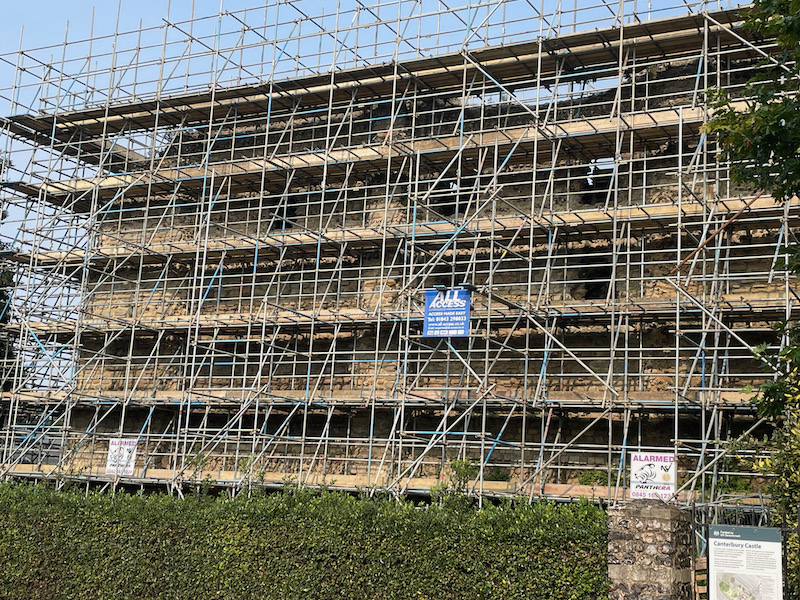
I also mentioned the Roman walls and the original motte-and-bailey castle that William built in 1066. Today, you can see parts of the Roman walls, modified with Medieval ramparts, which now encloses a little park. The first walls were Roman, 270-280 AD, built from stone on top of an earth bank, protected by a ditch and wall towers. By the 12th century, the walls were not of much military use. Around 1363, the city walls were rebuilt (still in stone) with 24 towers. During the 18th and 19th centuries, the walls needed torn down to allow urban growth. All gates except for the West Gate were destroyed, and then additional damage was done in WWII. About 1/2 of the original walls remain.
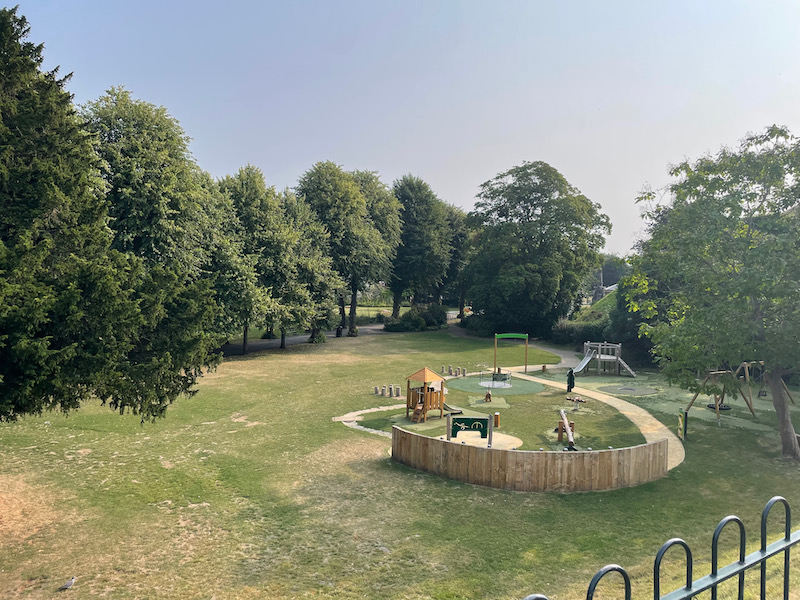
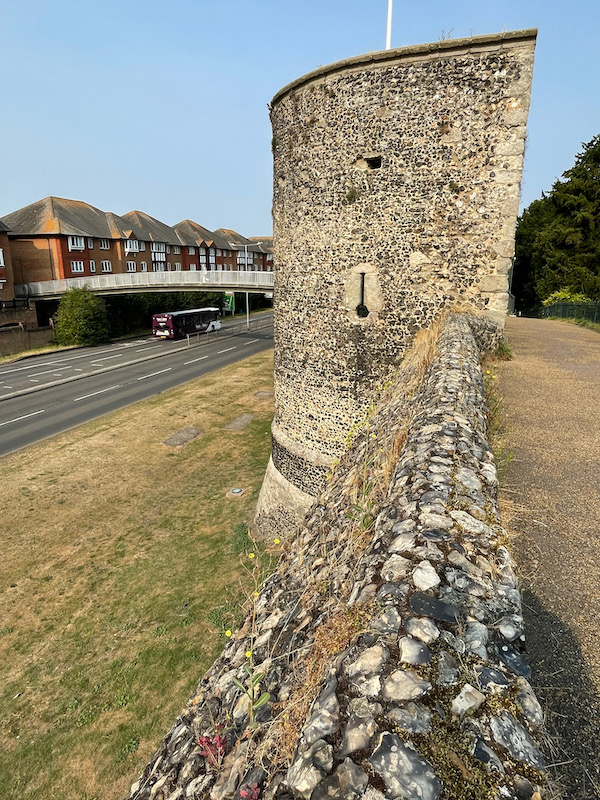
There are more Roman walls in a little garden. These were then repaired during the Middle Ages. The original Roman wall is just behind the young girl sitting on the bench, and then above it are the bricks and other stones that were added in the Middle Ages.
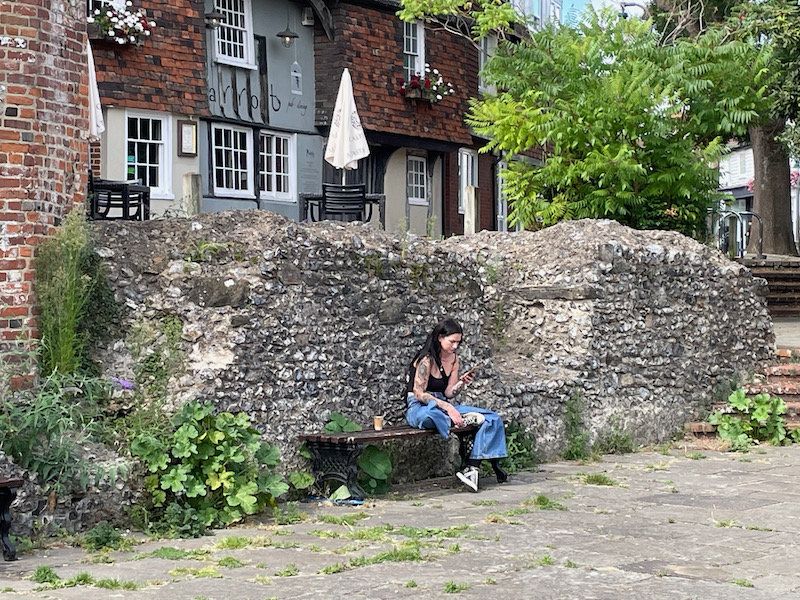
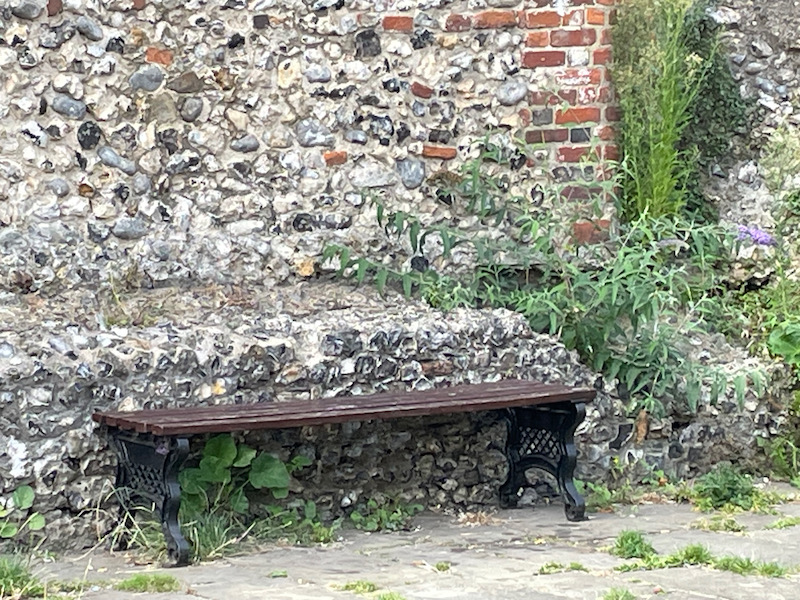
We took some time to go through the old town, including High Street and Kings Mile. Lots of cute half-timbered houses and interesting architecture. Some, like in the 2nd picture, when when the building was built (in this case, 1573).
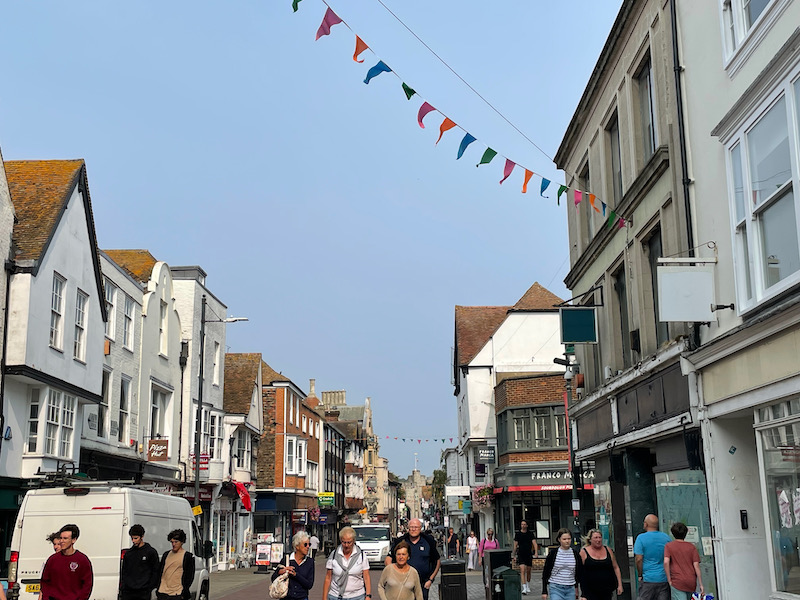
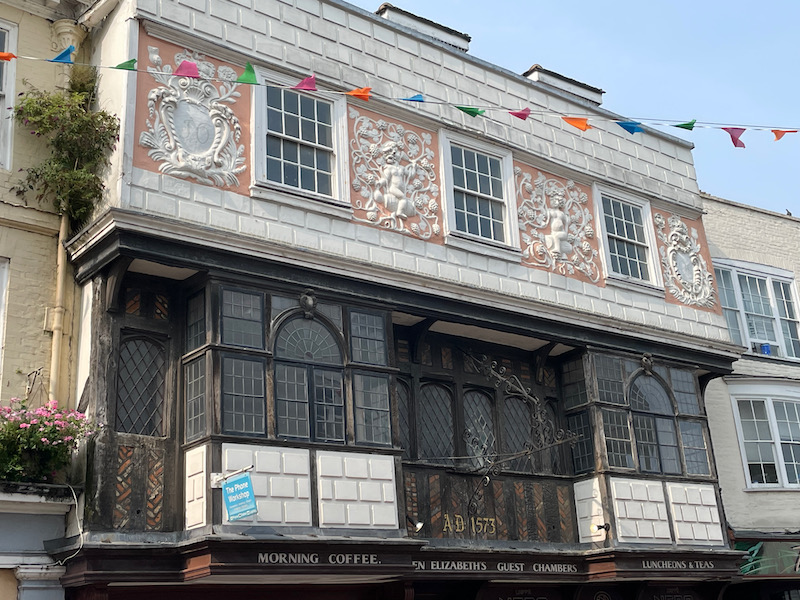
Butter Market and Butchery Street are just outside of the Cathedral. In the mid-17th century, bulls would be tied up here overnight and then taken around the corner to be slaughtered. There is a Roman museum on this street (across from the bull head) which houses a Roman pavement mosaic and remains of a Roman courtyard house, literally in the location where it was found. It was discovered after bombings in World War II and the museum was built around it. We didn't go inside to see it but here is a picture from Wikipedia of part of it.
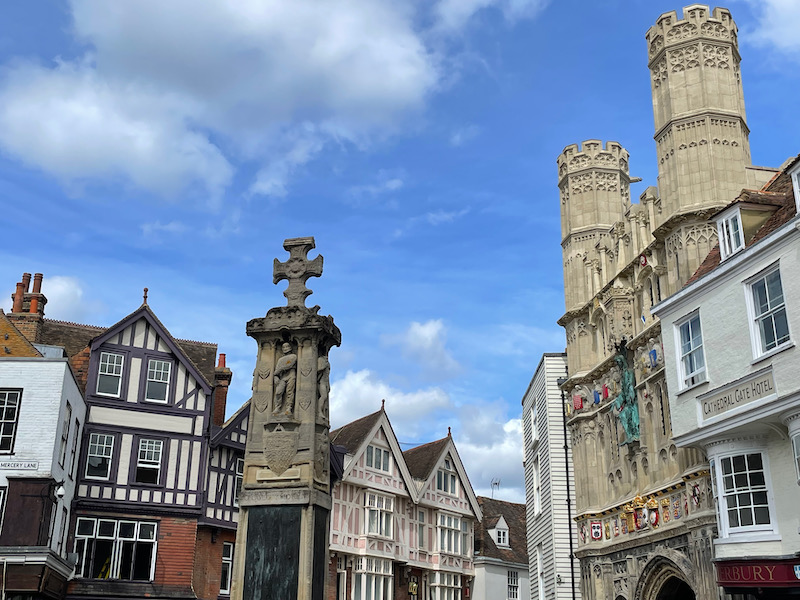

Probably the most impressive building is the current home of the Beaney Institute. The building was built in 1897 in a Tudor Revival style and was built specifically to house the city's existing museum.
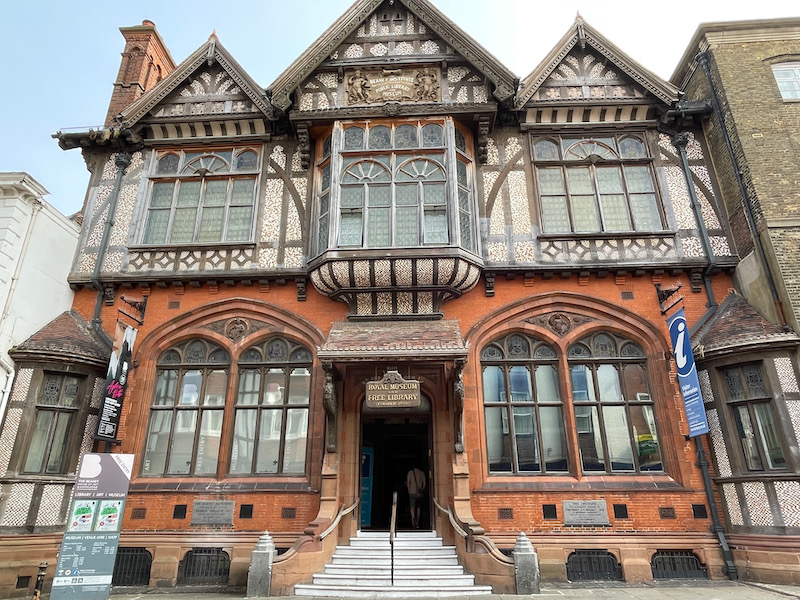
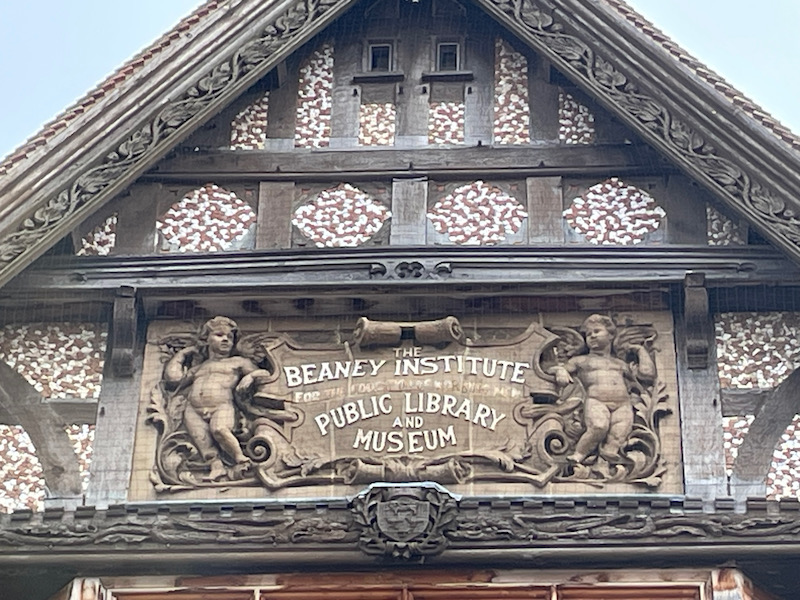
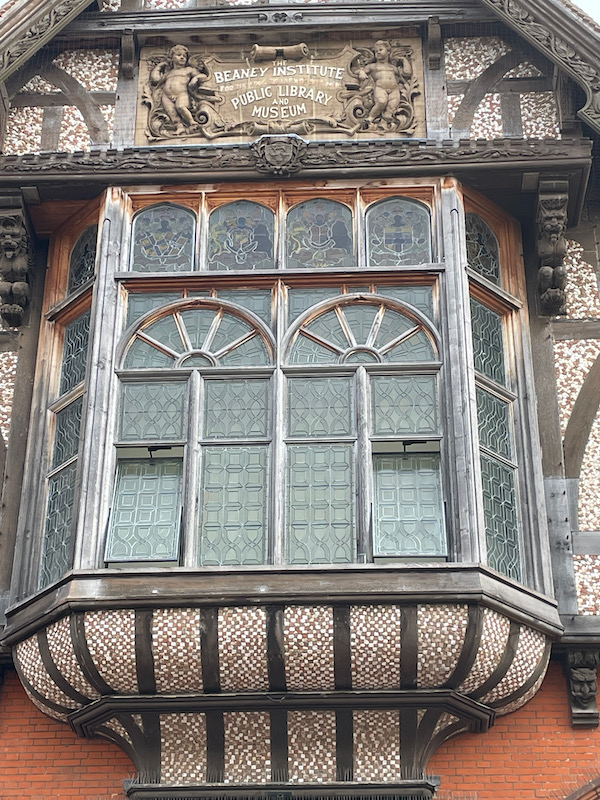
This was the Canterbury Pilgrims Hospital, which dates from 1190 with notable Gothic archways.
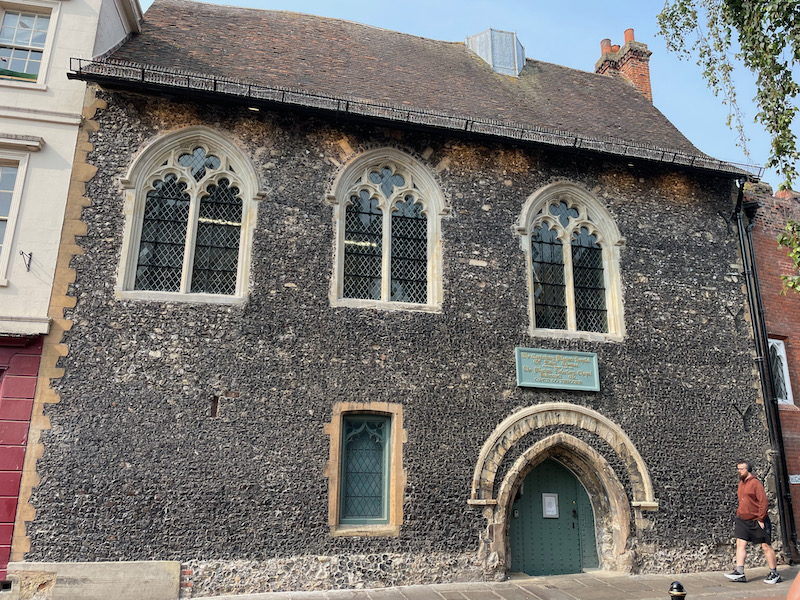
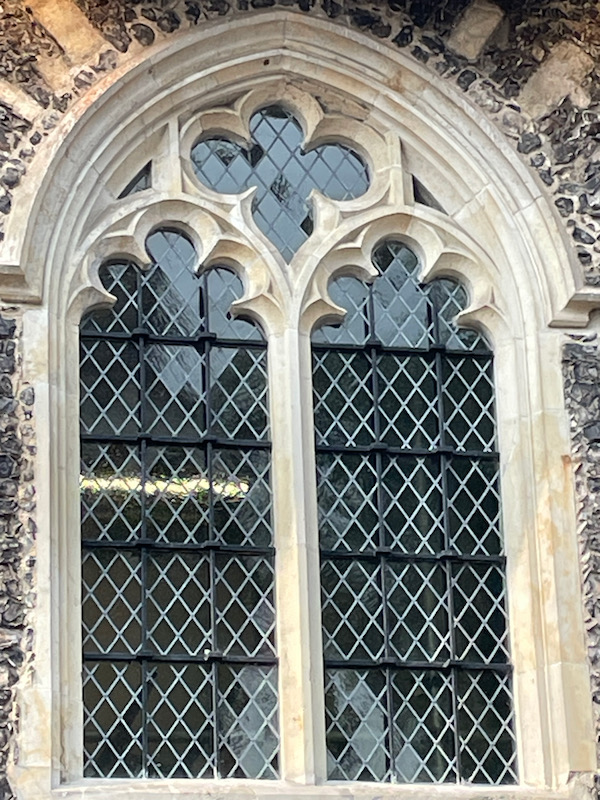
The city center contains a few half-timbered houses from the 16th and 17th centuries but most were damaged during World War II. The Old Weaver's House is one of the few that survived. The name comes from the influx of Flemish and Huguenot weavers who settled here after fleeing from religious persecution. Elizabeth I granted Flemish weavers the right to establish their businesses in Canterbury.
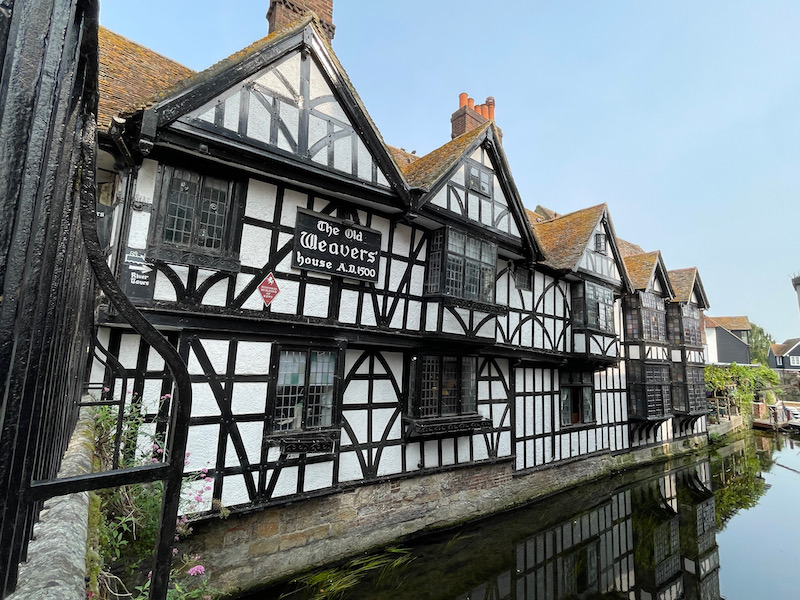
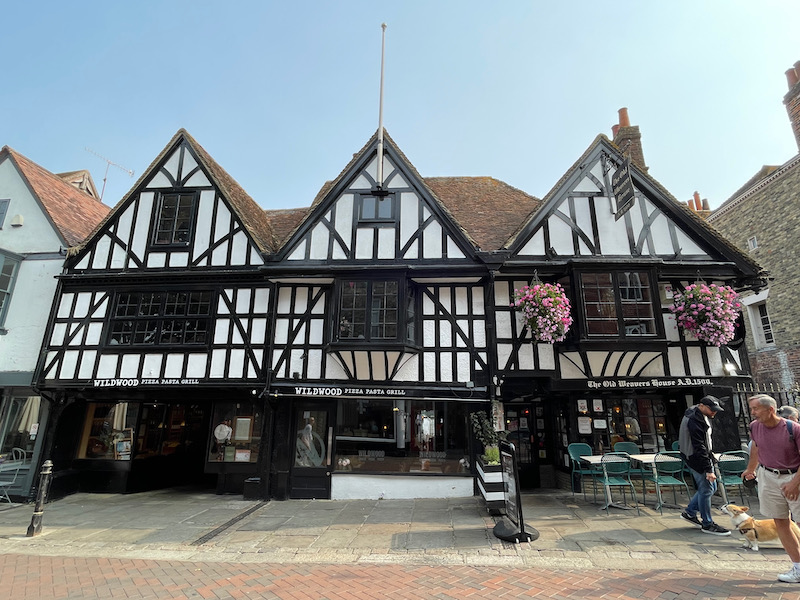
This interesting house looks like it was attached to a medieval tower, and in fact, it was! A house was built here, attached to one of the 24 towers of the medieval walls from 1363, in around 1400. The existing Victorian house was built around 1850. Today, it is a venue for weddings and corporate events.
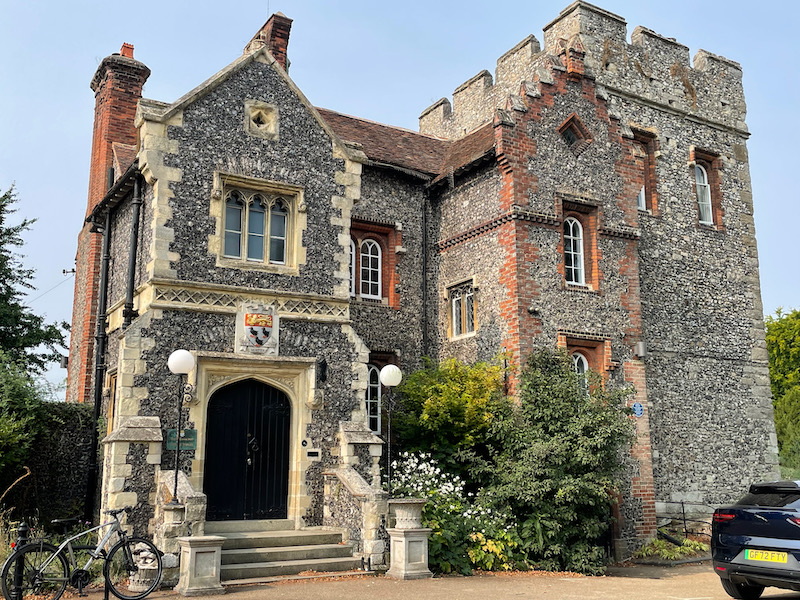
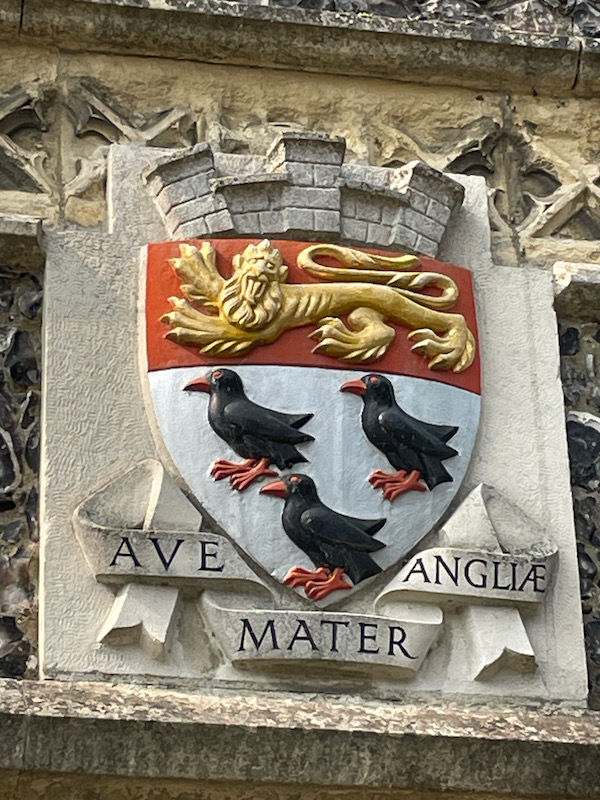
This quirky, skewed 17th century, double jettied, half-timbered building houses a bookshop.
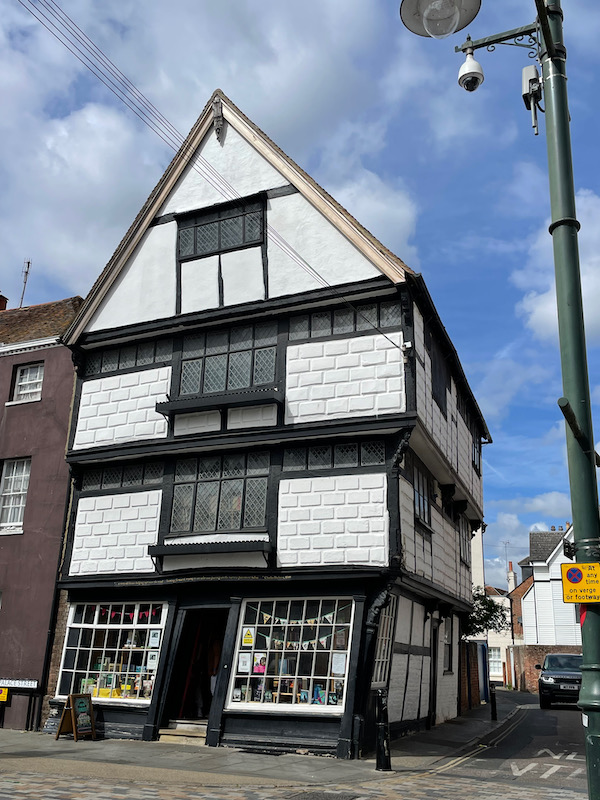
A couple more ... the Lady Luck and the Black Griffin.
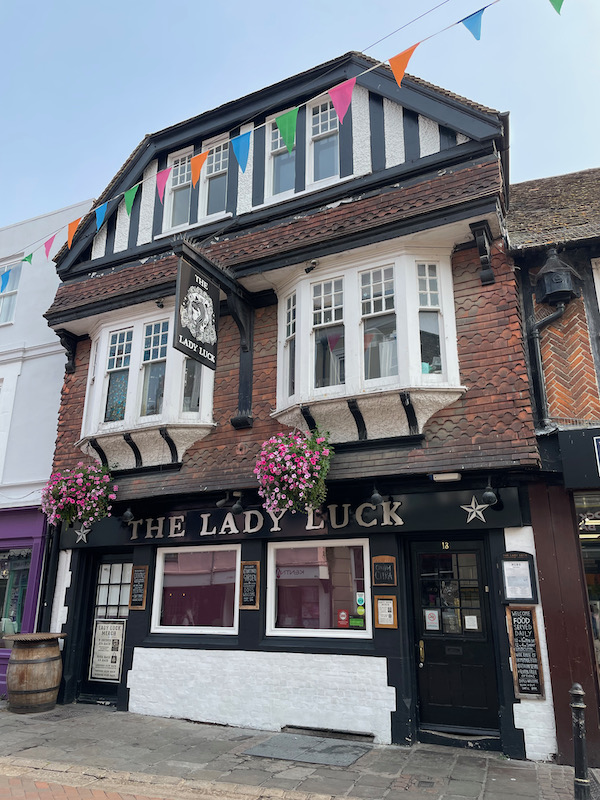
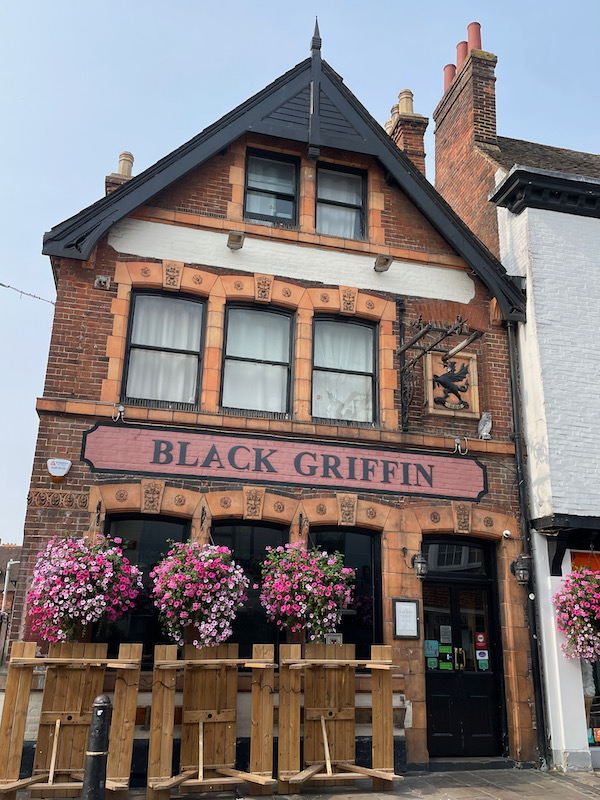
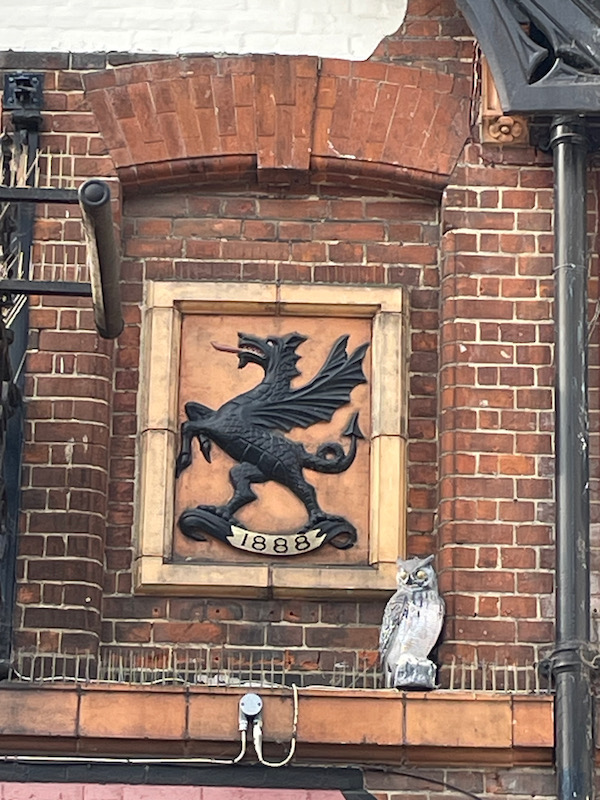
And to finish up with the non-Cathedral part of this blog, we are back to medieval times again, and the Westgate towers. This is the largest surviving city gate in England and the last of the 7 medieval gates here. In Romand times, there was also a gate here which would have been the most important one, as it led to London. The Roman gate was rebuilt around 1380. Starting in 1453, there was also a prison here. The first picture is from the outside of the wall, and the 2nd is from the inside. Canterbury was walled by the Romans around 300 AD and the gate here would have been the most important, leading to London. The present towers are a medieval replacement of the Roman west gate, rebuilt around 1380. It has been suggested that it was built primarily as an entrance for pilgrims visiting the shrine of St Thomas Becket at the cathedral. In 1453, Henry VI permitted the Mayor and Commonality to keep a jail at the Westgate, so the building was a prison from the 15th to the 19th century, while Canterbury Castle was the county jail. In January 1648, after the Christmas Day riot, Parliamentarians burnt down all the wooden doors of the city's gates. They were all replaced in 1660, but these replacements were removed at the end of the 18th century. They were similar to the surviving wooden Christ Church gates at the cathedral. The guard rooms, heavily wood-lined in the 18th century, became cells for both debtors and criminals, and the room over the arch became the condemned cell with the portcullis now laid on top.
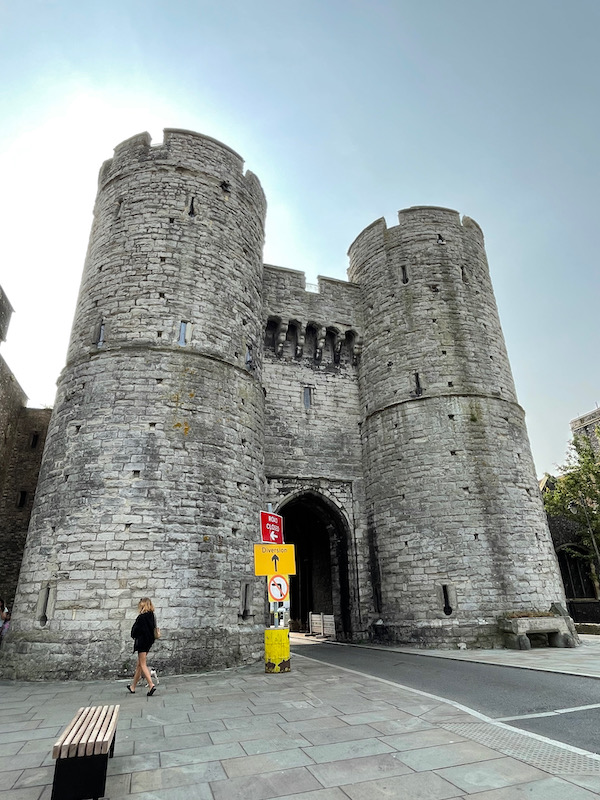
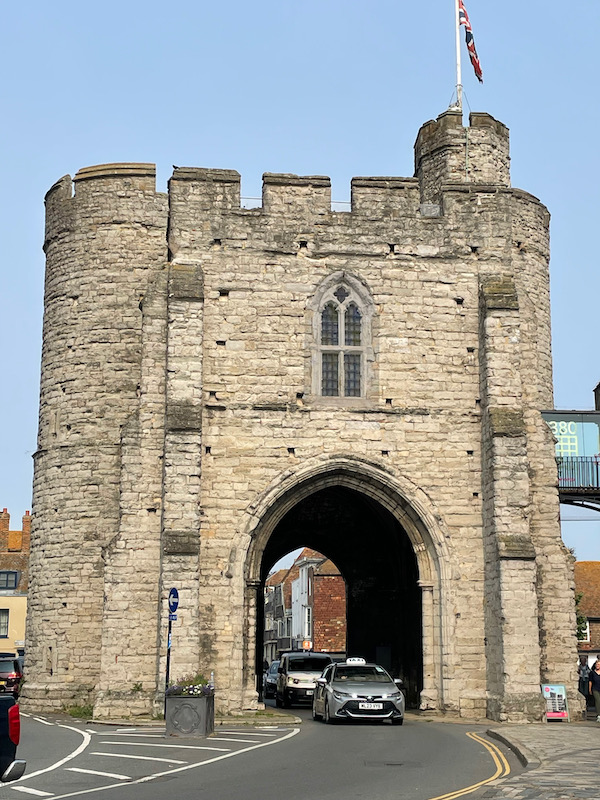
From here, you can continue to the main draw of the town in the Canterbury Cathedral blog which I separated out because it had so many pictures.